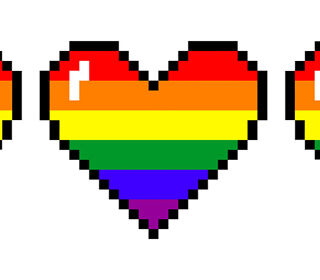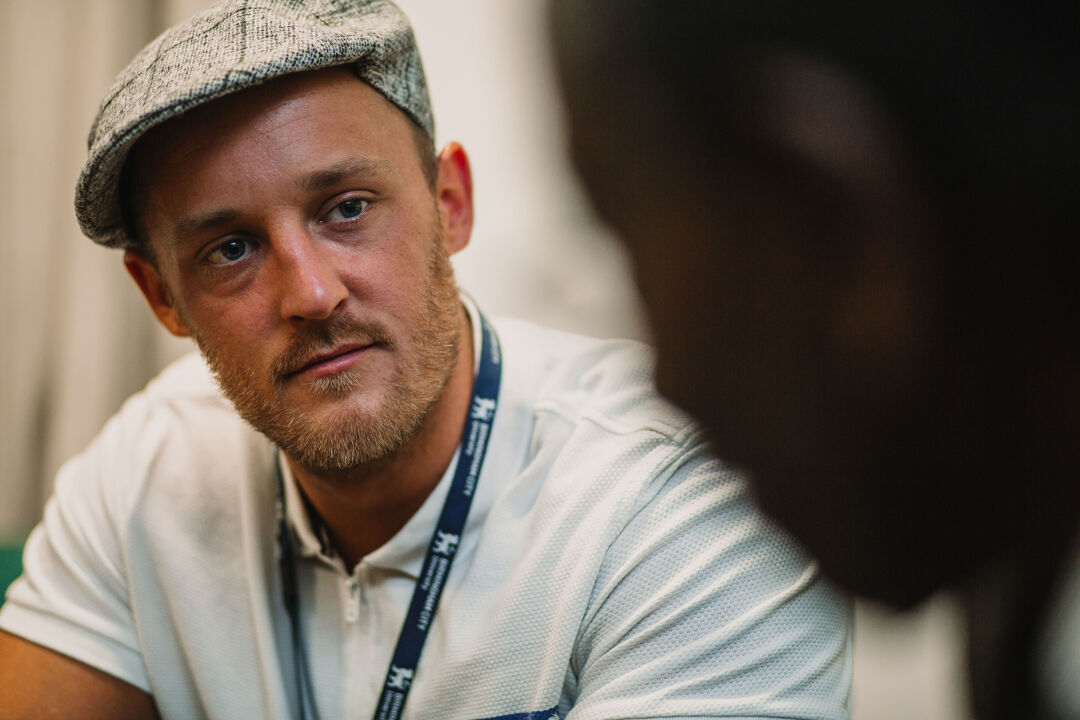
Blog

Assistant Lecturer in Psychology Frazer Heritage examines how the representation of LGBTQ+ characters in video games, and the reaction to them, have evolved.
If there is one thing that the COVID lockdowns have taught us, it is the value of entertainment media. Many people who are self-isolating, on furlough, or unable to attend school in person need things to occupy their time: and one such medium which many are turning to is video games. Video games are an ever-growing industry – compare for example, the graphics between a game like Pong (released in 1972) and Cyberpunk 2077 (released in 2020). The difference is night and day; we have moved from clunky uni-directional pixels to almost movie-like graphics. Alongside the development of the graphics in video games, though, have also come developments in what stories we can tell.
Compare the society we lived in back in 1972 and the society we currently live in from the perspective of LGBTQ+ rights. A lot has changed since, and so it is unsurprising that the way we represent LGBTQ+ characters has also changed. But video games have always had a complicated relationship with gender and sexuality. Often criticised for over representations of white, cisgender, heterosexual men, many video games (and the communities that play them) have been the subject of much academic research from queer and feminist perspectives (see, for example, the work of Adrienne Shaw, Kishonna Gray, and Matthew Wysocki, to name a few).
It’s important at this point to take a step back and address a caveat to the representation of LGBT+ identities within video games. Video games are not homogenous: there are multiple different types of video games, including video games created by people from marginalised identities who specifically create certain characters to ensure representation (e.g. queer game designers). However, the video games I mainly discuss (and research) are AAA rated mainstream video games, rather than, for example, video games which come from small indie developers. In other words, the kind of video games I look at are the kind of video games that get adverts on TV/busses and which are usually contenders for “game of the year”.
When we look at the representation of LGBTQ+ characters in such video games, we see a bit of a mixed picture. On the one hand, such representation does exist – and it can be traced back to the 1980s, when video games first really started having extended narratives. In the 1980s, there were characters who were ARGUABLYLGBTQ+. For example, in 1988 Nintendo released Super Mario Bros. 2, which contained Birdo. This character believed he was in fact female and preferred to be known as Birdetta. However, this information was only provided to players within the accompanying manual of the game – and how many average players read all of those? Regardless of the information only being shown in the manual, Nintendo quickly censored the manual, so what little confirmation there was of this was swiftly removed. In the game, Birdo was not visually represented as LGBTQ+ nor did they say anything to indicate they were.
Such allusions became a bit more prominent in the 1990s, and there were a few characters who it could also be argued were LGBTQ+. However, the representations were still problematic. Take, for example, a classic scene in one off the best-selling video games of all time – Final Fantasy VII (1997). One such scene has the protagonist find and wear women’s clothing in order to audition as a girl who will spend the night with a male character. Leaving aside the problematic nature of this as a whole anyway - one piece of women’s clothing is in a gym full of body builders (who look reminiscent of muscle bears with handlebar moustaches), and another is in a brothel. In this brothel, you can end up in a hot tub with ten other men and get propositioned. The portrayal of the characters who are queer coded clearly relied on problematic stereotypes of gay men (muscle-bound, promiscuous, and hanging out in bathhouses). While it was good to see that there was some representation of queerness, the kind of representation was not amazing.
The scene from Final Fantasy VII ties into a broader phenomenon found within video games when they try to present LGBTQ+ identities: the gay button. Even by the mid-2000s, when characters confirmed their sexuality, or players were given the choice of the gender/sexuality of the characters they wanted to play, this was often mitigated in some form. For example, if a videogame allowed you to play your character as an open ended ‘blank slate’, they might let you fall in love with/enter into a relationship with a same-sex character. However, to do so you would have to be explicit in your decisions. For example, in the game Bully (2006), you are able to play as a bisexual character – though it is your choice to play as such (i.e. if you wanted to, you could play the character as straight).
There are also a number of video games even as recent as The Witcher 3: Wild Hunt (2015), where there are non-playable LGBTQ+ characters, but their gender/sexuality is hidden behind various button in-puts. For example, one story line has you travel with a hunter, and if you select the right dialogue options, it reveals that he is gay. This character’s sexuality is not given from the onset, rather, only presented through either luck or determination to see if the character is gay or not. This and the example from Bully exemplify a problem with queerness in modern video games: that LGBTQ+ representation is something the player must actively pursue and it is not something which is given to the player freely.
When characters are represented as LGBTQ+ from the onset, reactions from members of different gaming communities has been less than civil. Take, for example, The Last of Us 2 (2020). In this videogame, the main character is revealed to be a lesbian. The ratings The Last of Us 2 received were negatively impacted by this kind of representation – reviews reading, for example [spoiler warning]: “Now, this game's next purpose was to normalize and shove down your throat the LGBT agenda They thought well we had one gay character on the last one so let's […] shove this new agenda down their throats”. Such homophobia is not new. This kind of attitude towards LGBTQ+ people has been present in different forms of media for decades – why would video games be any different? Nevertheless, what we do see is a step in the right direction on the part of videogame companies: they are moving from optional representation to non-optional representation, and in this non-optional representation, they are not relying on out-dated and harmful stereotypes.
Video games have only been around for about 60 years but have very quickly become a product of our culture. They have the power to normalise the idea that not everyone is heterosexual and/or cisgender. They also have the ability to show that LGBTQ+ people are more than a handful of stereotypes. Although there is still a long way to go in achieving equality within video games, there appears to be some hope – developments in the representation of LGBTQ+ identities in games like The Last of Us 2 show that progress has been made. Who knows – maybe in 20 years we will all be surrounded by new video games which have better representation and a better reception.
Frazer Heritage is an Assistant lecturer in the Department of Psychology. He researches language, gender, and sexuality within different forms of media, with a particular focus on video games. He is part of the Games Cultures Research Cluster as well as the Identities and Inequalities and Security and Extremism Research Centres.




